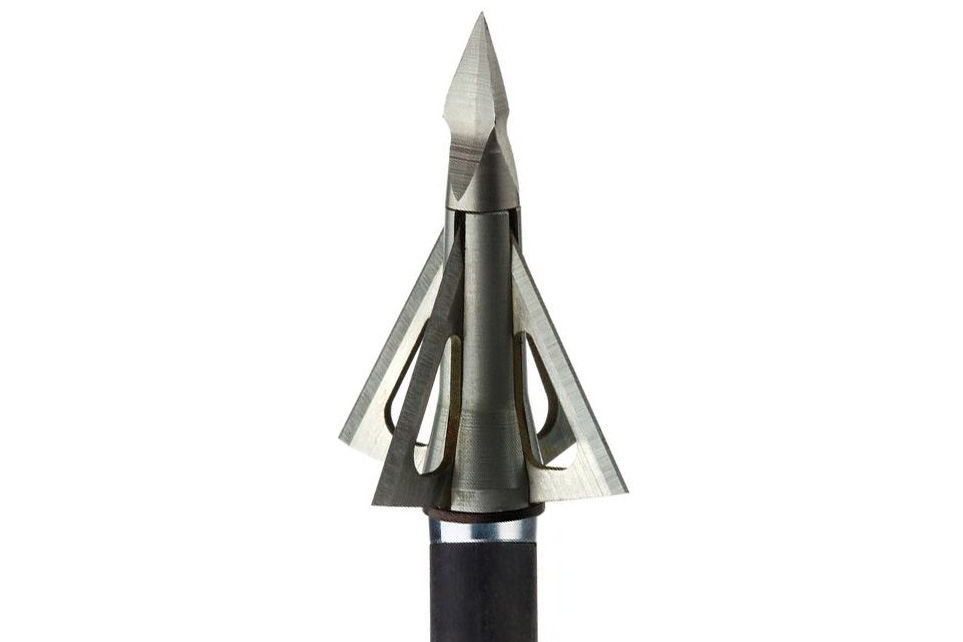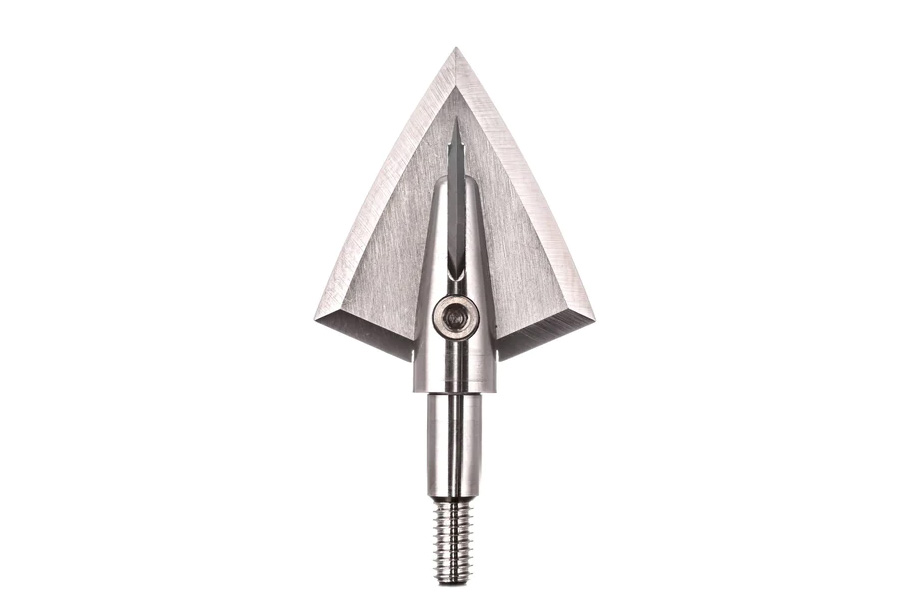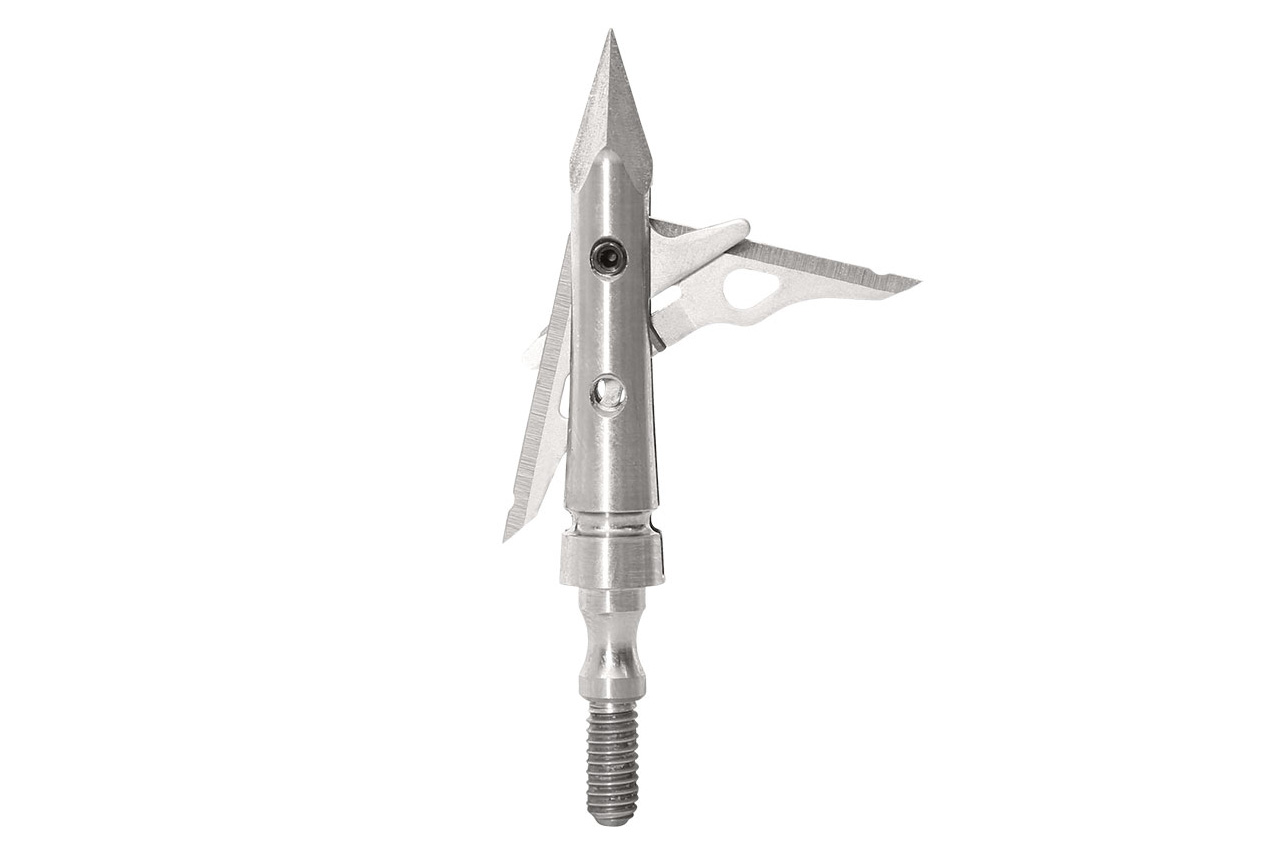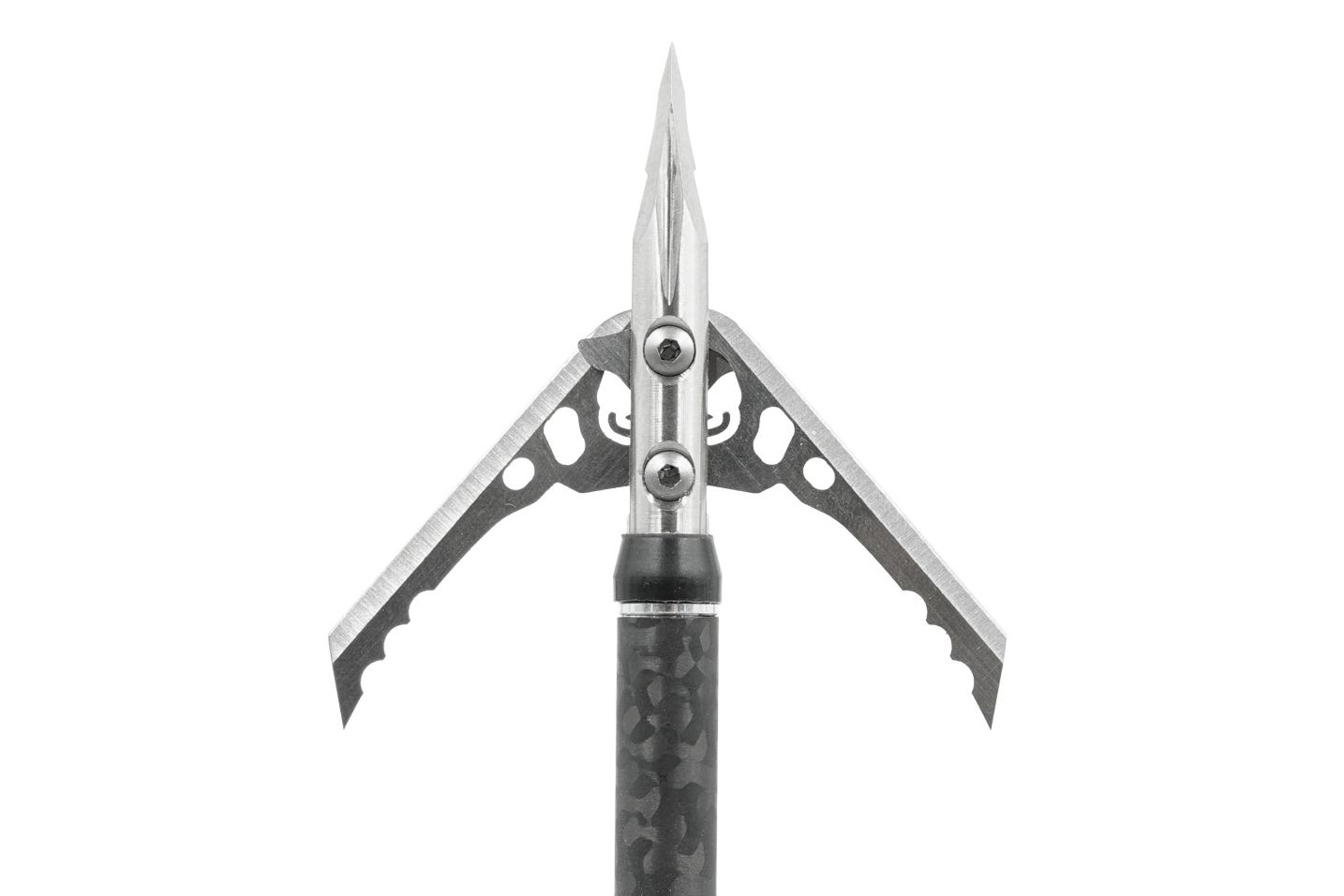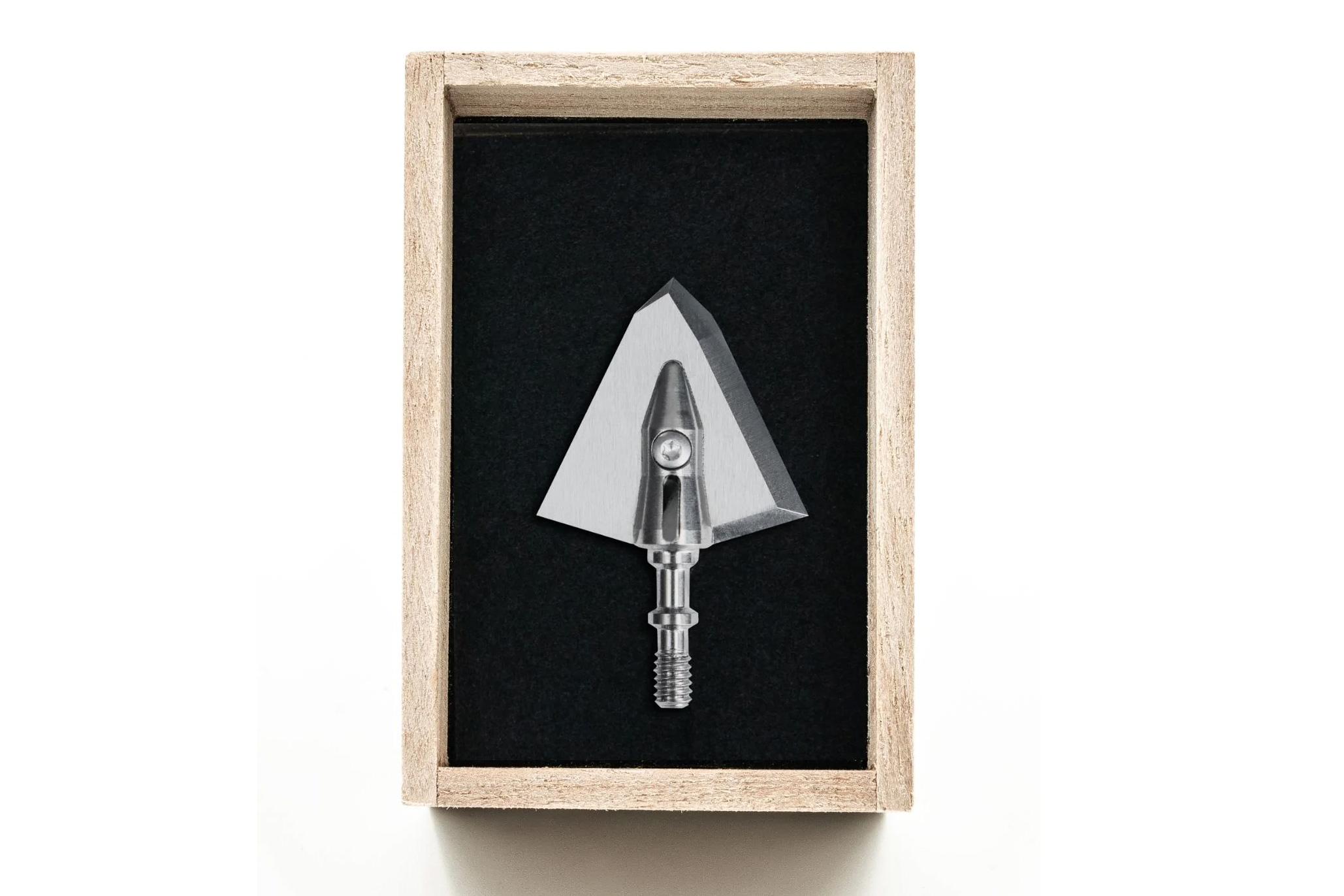The Best Broadheads for Hunting in 2022
The business end of an arrow is one of the most vital components of bowhunting.
Finding the right broadhead for you, your bow setup, and the animal you’re hunting can be the difference between filling a tag and not. Once we let that arrow go, it’s out of our hands, and the broadhead takes the wheel.
The fact is that we have nearly unlimited broadheads to choose from, and many are left scratching their heads wondering where to even start. With that in mind, we’ve put together a list of game-dropping broadheads to help narrow your focus in 2022.
Scroll through to see all of our recommended buys or jump to the category you’re looking for. At the end of our list, be sure to check out our buyer’s guide.
- Best Overall
- Best Budget
- Best One-Piece Fixed Blade
- Best Replaceable Blade Fixed Head
- Best Collared Mechanical
- Best No-Collar Mechanical
- Best Hybrid
- Best Single Bevel
- Best of the Rest
The Best Broadheads for Hunting in 2022
Best Overall Broadhead: Grim Reaper Micro Hades Pro
It takes several performance qualities to make up a good broadhead. Those include durability, accuracy, penetration, and dependability. A moderate price point also helps. A broadhead that hits all of those marks is the Grim Reaper Micro Hades Pro ($40).
Grim Reaper is a seasoned company in the bowhunting industry as well as the inventors of Razortip Technology. These patented mini-tip blades significantly increase penetration and are a key feature of the Micro Hades Pro. This micro-designed broadhead has pinpoint accuracy, especially at high speeds.
This 100% stainless steel, replaceable-blade broadhead comes in packs of three in a wide range of options. Offered in both a three- and four-blade, there are 100-, 125-, and 150-grain weights to choose from. There is also a “Deep Six” option for the 100-grain three-blade. The cutting diameter sits at 1-1/16-inch for the Micro Hades Pro.
A unique feature of this broadhead is the sharpened back edges. Also, the front has a V-notched trocar tip and four-point locking system, so the blades don’t come loose.
All Grim Reaper broadheads are proudly made in the U.S.A., and the brand boasts one of the best customer service departments in the biz. For a hunting broadhead that can do it all, the Grim Reaper Micro Hades Pro is the ticket.
Check Price at AmazonCheck Price at BlackOvis
Best Budget: Muzzy Trocar 3-Blade
Everyone has a budget, and budget shouldn’t keep you from a quality broadhead. With the Muzzy Trocar three-blade ($31), your bank account won’t whimper, and you’ll still have a quality blade capable of notching your tags.
Muzzy needs no introduction, as the brand has been slinging broadheads and filling freezers for quite some time. The Trocar three-blade was designed for extreme accuracy and bone-breaking penetration in a compact package.
This replaceable three-blade broadhead has a one-piece stainless steel ferrule and comes in packs of three. It has a cutting diameter of 1-3/16 inches and is available in a 100-grain weight option.
On the front end of the Trocar, you’ll notice a trocar tip, which is where it gains its bone-shattering capability. And let’s not overlook the helical SS blades, which create better broadhead stability in flight. All of this leads to better accuracy downrange.
When it’s all said and done, you don’t need to break the bank for good broadhead performance. The Muzzy Trocar 3 Blade has got your back.
Check Price at AmazonCheck Price at Dick’s
Best One-Piece Fixed Blade: Annihilator
A design that has stood the test of time, one-piece, fixed-blade broadheads are about as reliable as it gets. Annihilator broadheads ($57+) have carved out a place for themselves in bowhunting and it does this category justice on all fronts.
The Annihilator broadhead is a uniquely shaped one-piece, three-blade made of 4140 alloy steel hardened to Rockwell RC: 52. These blades are made to be virtually indestructible, fly-like field points, and they inflict nonclosing wounds.
You’ll find these heads in packs of three, offered in 100- and 125-grain. They’re also offered in XL sizes in weights of 100-, 125-, and 150-grain.
Annihilators also have 0.180 square inches of cutting surface area, the largest cutting surface area of any other broadhead. Because of the unique blade design, it reduces friction on the arrow shaft or bolt. This results in a higher likelihood of a pass-through. It’s an excellent option for elk hunting.
The Annihilator is 100% made in the USA, durable, lethal, and quiet. It’s suitable for compounds, crossbows, traditional bows, or longbows. The Annihilator broadhead is pretty much universally capable. There isn’t a whole lot to not love about Annihilator broadheads.
Best Replaceable Blade Fixed Head: Day Six Evo
Day Six Gear is a specialty company catering to only the most diehard of bowhunters. Quality and performance in the worst of conditions are what they strive for. The company’s Evo broadhead ($99) is the best of the best in replaceable blade heads.
Replaceable-blade, fixed broadheads are easily the most popular fixed heads used across the spectrum of hunting scenarios. A common flaw is that they aren’t typically as durable as nonreplaceable heads.
Day Six does away with that issue by using S30V steel in its Evo broadheads. It’s a steel that’s hard enough for excellent edge retention but not so hard that you can’t resharpen it yourself.
The Day Six Evo comes in three weights: 100-, 125-, and 150-grain. They can be purchased in packs of three or six. Evo heads are 1-1/16 inches wide with ½-inch low-profile bleeder blades. That bleeder can be switched out with a ¾-inch blade if desired.
Whether it’s day one or six, the Evo will be ready when you need it for any big game animal in North America.
Best Collared Mechanical: Sevr
Collared mechanical broadheads have blades held in place by a rubber band or collar-type system to keep them from prematurely deploying. Field point accuracy, dependability, and huge wound channels — the Sevr Titanium ($16+) has raised the standard in the collared mechanical broadhead world.
Sevr broadheads came to market in 2018 and absolutely changed the game for mechanical broadheads. Along with the natural benefits that mechanicals bring to the table, like field point accuracy and big wound channels, Sevr also squashes some of the natural downsides like deflection and breaking blades.
Their unique pivoting blade design, ensures that should a blade hit bone, your arrow is not going to veer off course. The blade will simply pivot, pass over the bone, and then return back to zero after the fact. This feature also aids in keeping blades from breaking.
Sevr also allows one to put the broadhead in practice mode by way of installing a small set screw. Now the head can be used for practice without the worry of dulling and deploying blades in targets. When in the field, blades are held in place by a small rubber band (collar) in the ferrule. On deployment, this collar breaks.
Sevr Titanium broadheads come in weights of 100- or 125-grain and in a 1.5-inch or 2.0-inch cutting diameter. All heads are individually packaged and don’t limit the consumer to just buying the classic three- or four-pack. One can buy one, two, three, or four heads, on up to as many heads as they want.
Sevr is a direct-to-consumer company, so all of this needs to be done through the company’s website. There, you’ll also find the option to buy replacement blades.
For a collared mechanical broadhead that screams accuracy, forgiveness, and devastation, the Sevr Titanium is it. And because of its durability, you can take it from the deer woods to the elk woods. The needle has been moved.
Check 1.5 Price at SevrCheck 2.0 Price at Sevr
Best No-Collar Mechanical: Rage Hypodermic Trypan NC
Rage has been a leader in mechanical broadhead development for as long as I can remember. They are known for their massive wound channels and field point accuracy. The Hypodermic Trypan NC ($40) is everything you’d expect from a Rage broadhead without needing the aid of a collared system.
This is a two-blade mechanical broadhead developed to deliver maximum devastation with little effort. It’s got a hypodermic tip and streamlined titanium ferrule. These heads come in packs of two and are offered in 100-grains. The blades have a super-sweptback design and are 0.039 inches thick.
With the Rage Hypodermic Trypan, you’ll get a 2-inch cutting diameter. After the hypodermic tip enters an animal, blades will deploy from Rage’s 100% reliable blade retention system. From there, by way of their Slip Cam design, the blades will fall into the optimal position for penetration and cutting diameter.
And arrow flight is of no concern with these. They’ll fly right with your field points. End of story.
The Rage Hypodermic Trypan is at the top of the food chain for no-collared mechanicals. Hunters take all sorts of big game with this head, but I feel it really shines in the deer woods.
Check Price at AmazonCheck Price at Scheels
Best Hybrid: Grim Reaper Pro Micro Hybrid
There are benefits to shooting a fixed blade head and benefits to shooting a mechanical head. The Hybrid ($54) from Grim Reaper combines everything you love about both into one package.
It’s no shocker that Grim Reaper pops up again on this list. This time it’s with their Pro Micro Hybrid head. Just like on other Grim Reaper heads, this Micro Hybrid series is tipped with their famed V-notch chisel tip and is made of 100% stainless steel.
Technically a four-blade head, the Micro Hybrid comes in two different weight options — 100- and 125-grains. They’re also offered in three different cutting diameters.
The fixed portion has the same blades as Grim Reaper’s Hades broadhead with a cutting diameter of 1-1/16 inches. Now, for the mechanical portion, you’ve got three different options. There is a smaller cutting diameter option (1¼ inches), a larger option (1-3/8 inches), and an even larger option (1¾ inches). They can be purchased in packs of three.
The smaller stature of the Micro-Hybrid makes it excel in arrow flight and pinpoint accuracy. And you don’t have to worry about any rubber bands on the mechanical portion of this head. They hold in place inside of the ferrule until impact. Grim Reaper also makes a practice head that you can use so you don’t go dulling up your blades.
Can’t decide between a mechanical broadhead or a fixed-blade broadhead? Get the best of both worlds with the Grim Reaper Pro Micro Hybrid.
Check Price at AmazonCheck Price at Cabela’s
Best Single Bevel: Iron Will
Iron Will has been slinging broadheads to bowhunters since 2016 and has always been known for its durability, quality, and performance. Pair that with single-bevel technology and you get one top-notch single-bevel broadhead ($120).
In short, single-bevel blade profiles create an S cut on impact and the bevel on each side forces a rotation as it travels through an animal, target, etc. The result is massive tissue damage and a bone-splitting effect. Iron Will took that thinking and applied it to their own already-successful broadhead design.
The Iron Will Single Bevel broadhead is available in weights from 100 grains all the way up to 250 grains. Their blades are 0.062-inch-thick A2 tool steel blades and are cryogenically treated and triple-tempered to 60 HRC hardness. The cutting diameter for these heads sits at 1-1/16 inches for the main blade and ¾ inches for the bleeder blades.
Bleeder blades are optional and are also a single bevel design. Both main and bleeder blade replacements are available on Iron Will’s website.
These come in packs of three, and a person can also choose either a right or left bevel to match their fletching. Lastly, a unique cherry on top is that Iron Will also offers a custom engraving service to personalize each broadhead. Nice touch.
Arrows naturally rotate through flight and single-bevel broadheads help maintain that rotation through an animal. If that sounds like your cup of tea, do not overlook this option from Iron Will. It makes short work of even the toughest-skinned animals out there, such as hogs.
Best of the Rest
Evolution Jekyll
“There can only be one Highlander!” All jokes aside, when it comes down to performance, design, flight, and price, the Jekyll ($60) from Evolution Outdoors takes the cake for the best of the rest.
Evolution Outdoors is rather new to the market as a company, but the owner Dale Perry is no stranger at all to broadhead design. If you were familiar with the original Gravedigger broadhead from back in the day, you can thank Dale for that. Since then, he has released a new Evolution of broadheads.
Evolution Outdoors offers two main broadheads. the Jekyll and Hyde. The Jekyll is a fixed blade and the Hyde is a hybrid. We’re going to focus on the Jekyll, but I needed to mention both because this is a modular design. While the front part of the head is absolute, the blades behind that can actually be interchanged between fixed or mechanical. The broadhead does all of this with the same ferrule.
The Jekyll is a fixed-blade broadhead offered in four different weight options: 100 grain (7075 aircraft aluminum), Crossbow 100 grain (7075 aircraft aluminum), 125 grain (416 hardened stainless steel), and 150 grain (416 hardened stainless steel). They are available in packs of three that come in a travel-friendly carrying case.
Each head has a ¾-inch cutting diameter on the front and a 1-inch cutting diameter behind it with a blade thickness of 0.060 inches. This is also a moderately priced head, meaning it’s more accessible to more people than other high-end broadheads on the market.
A field point accurate, modular designed fixed blade that’ll make short work of whatever stands in front of you. Evolution Outdoors hit the nail on the head with this one. The Jekyll is a must-see that shines in both innovation and performance.
Check Price at Evolution Outdoors
Buyer’s Guide: How to Buy the Best Broadheads for Hunting
Mechanical vs. Fixed
One of the age-old and ongoing debates in archery hunting camps is mechanical broadheads versus fixed-blade broadheads. Passionate arguments exist on both sides of the spectrum and both broadhead designs reliably work. Which one is better, though? The better question is which one is better for you.
The flat-out truth is this — both of these broadhead designs work. Endless success photos from bowhunters across the country are the proof in the pudding. Of course, each has its pros and cons. So, we’re going to break it down.
Fixed Blade

The fixed-blade broadhead has been doing its thing since the beginning of bowhunting. It’s been there and done that millions of times over again. So, it’s no surprise when hunters cling to this style of head. What you get is what you get with a fixed blade.
The biggest advantage of running a fixed blade broadhead is going to be reliability. There are no moving parts on a fixed blade like there are on a mechanical broadhead. For this reason, there is no worry of failure.
Along with that, these are inherently going to penetrate better, as there is no loss of energy from blades having to open. That means more pass-through shots. And lastly, fixed blades tend to be more durable overall. Especially the one-piece designs and heads made with higher-end steel.
When it comes to downsides, the first that comes to mind is tuning. Fixed-blade broadheads are harder to tune across the board. These vanes on the front end of your arrow influence flight much more than mechanicals do. This makes field point accuracy harder to come by.
Secondly, you might get more pass-through shots, but the wound channels are smaller. Smaller wound channels can lead to tougher blood trails, especially on marginal shots. And the last note is that higher-end fixed blades are also much more pricey.
Pros:
- Reliable
- Better penetration
- Durable
Cons:
- Harder to tune
- Smaller wound channels
- Higher-end heads are very pricey
Mechanical

Technology is an ever-evolving thing. People see gaps in efficiency and naturally want to fill them. The mechanical broadhead is a perfect example of that. It excels where the fixed blade doesn’t.
A huge selling point for mechanical broadheads is their impeccable arrow flight. It is very unlikely that you’ll need to do any sort of broadhead tuning with these things. This makes things so much easier before a hunt.
And once you do get on that hunt, you’ll hopefully loose an arrow at what you seek. Note that the blood trail is nothing short of fantastic, due to the massive cutting diameter that these broadheads inflict. If that sounds good to you, you won’t have to pay an arm and a leg to get yourself into a quality mechanical broadhead, either.
While the mechanical broadhead excels where the fixed-blade broadhead doesn’t, it also lacks where the fixed blade excels. First on the list is reliability. This has moving parts and can absolutely fail. With how hard archery opportunities are to come by, that doesn’t sit well with some bowhunters.
And because these heads expand on impact, there is always a loss of energy due to the force it takes to open up the blades. This robs folks of penetration. If the broadhead indeed comes out the other side, it’s also a very real possibility that it won’t all be intact. Mechanical broadheads aren’t nearly as durable as fixed blades.
Pros:
- Impeccable arrow flight
- Huge wound channels = Great blood trails
- Affordable
Cons:
- Can fail and not open
- Lacks in penetration
- Prone to breaking
Final Thoughts

When the book comes to a close, I’m not going to tell you that there is a right answer here across the board. There are too many variables for that.
Some folks swear by fixed blades and others swear by mechanicals, and that says two things. One, they are both damn good at their job. And two, don’t get too caught up in what other folks think. Mold your arrow setup to you and your style of hunting.
In the end, a broadhead is just a tool. The person wielding that tool is the one really running the show.
The post The Best Broadheads for Hunting in 2022 appeared first on GearJunkie.

